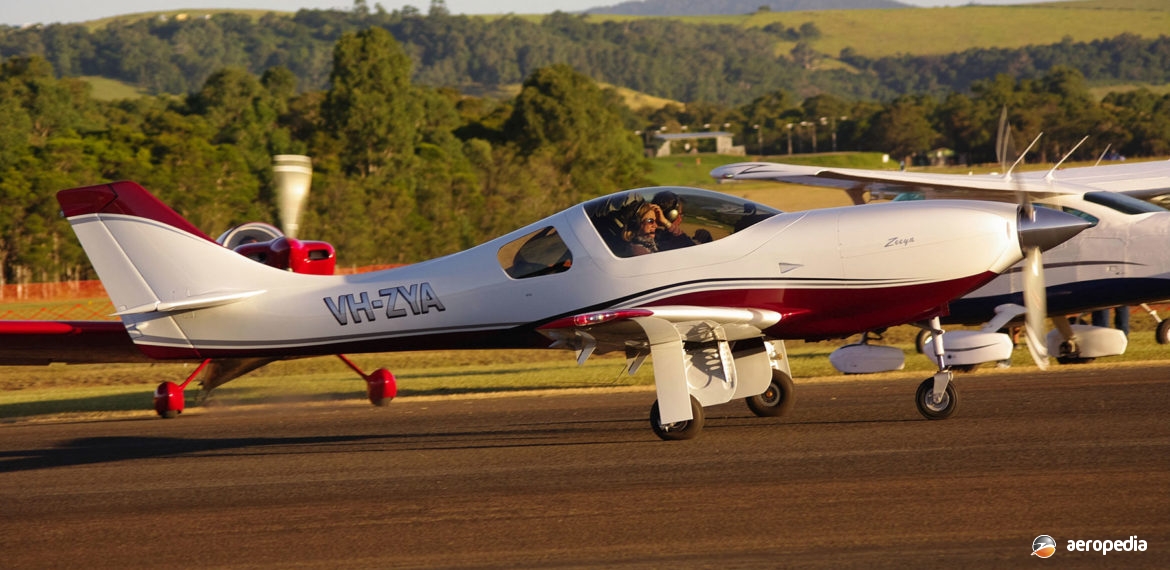Photograph:
Lancair Legacy 550 VH-ZYA (c/n L2K-205) at Albion Park, NSW in May 2011 (David C Eyre)
Country of origin:
United States of America
Description:
two-seat light sport monoplane
Power Plant:
One 230 kw (310 hp) Continental IO-550-N six-cylinder horizontally-opposed air-cooled engine
Specifications:
- Wingspan: 7.77 m (25 ft 6 in)
- Length: 6.71 m (22 ft)
- Wing area: 7.66 m² (82.5 sq ft)
- Max cruising speed at 2,436 m (8,000 ft): 444 km/h (276 mph)
- Cruising speed at 3,048 m (10,000 ft): 451 km/h (280 mph)
- Stalling speed, flaps down: 105 km/h (65 mph)
- Service ceiling: 5,486 m (18,000 ft)
- Rate of climb: 671 m/min (2,200 ft/min)
- Range at 2,438 m (8,000 ft) with reserves: 1,851 km (1,150 miles)
- Fuel capacity: 246 litres (54 Imp gals)
- Take-off run at sea level: 259 m(850 ft)
- Landing run: 274 m (900 ft)
- Empty weight: 680 kg (1,500 lb)
- Useful load: 318 kg (700 lb)
- Loaded weight: 998 kg (2,200 lb)
History:
The Legacy is one of a range of aircraft produced by Lancair, formerly known as Neico, for the kit-built market and is a high-performance private owners touring machine, being an up-dated variant of the Lancair 320. It is a low-wing, two-seat composite monoplane produced in kit form in the United States and has a retractable undercarriage. A variant is available as the Legacy FG, which has a fixed undercarriage and cruises at 2,438 m (8,000) ft at 444 km/h (276 mph).
In 2009 the Colombian Air Force ordered 25 examples of the FG for use as basic trainers, these aircraft having 15 percent more wing area than the standard Legacy FG, leading-edge cuffs and a ventral fin to improve stability and low-speed handling. They were delivered in kit form and became known as the Lancair Synergy.
This, and the other aircraft in the range, all commenced with the revolutionary Lancair 200 in 1985. The type has gone from strength to strength, with a number built in Australasia over the years. The aircraft is able to be trailered, the wings being removed, and thus remains on its undercarriage. Power is provided by engines in the 119 kw (160 hp) to 230-kw (310-hp) range, ie the Lycoming IO-360 up to the Continental IO-550, with a variety of engines in between. Hartzell and MT-Propellers are available. Fuel is carried in the wings, the tanks being integral with the wing bays.
First of the type completed in this region became VH-XTZ (c/n L2K-323) to Smith Legacy Pty Ltd of City Beach WA in August 2010; another becoming VH-ALP (c/n L2K-142) to its owner at Geraldton, WA in the same month; followed by VH-VIW² (c/n L2K-242 – ex N922F) on 7 March 2011 at Noosa QLD, its registration being changed to VH-VIV³ on 18 November 2011.
An example became VH-ZYA (c/n L2K-205) on 20 December 2012 to its owner at Winmalee, NSW this being a Legacy 550 fitted with a Continental IO-550-N engine providing 231 kw (310 hp) with a max cruising speed at 2,438 m (8,000 ft) of 444 km/h (276 mph).
By 2016 models available were the RG-550, an improved model with a retractable undercarriage; the FG-C550 being a fixed undercarriage model of the RG-550; the FG-390 with a 157 kw (210 hp) Lycoming IO-390X engine and a fixed undercarriage; and the RG-550/R, a special variant built for sport and super sport air racing with a reinforced carbon fuselage and wings for a high-G environment, fitted with a turbocharged Continental TSIO-550 engine. One example was built with a turboprop and became known as the Turbulence.

